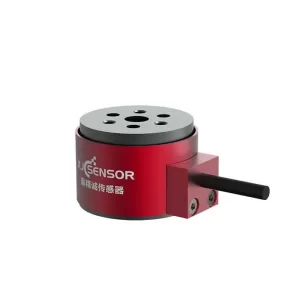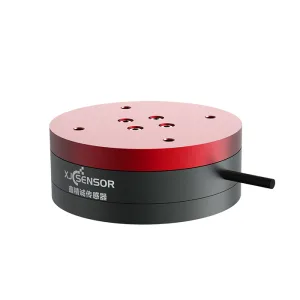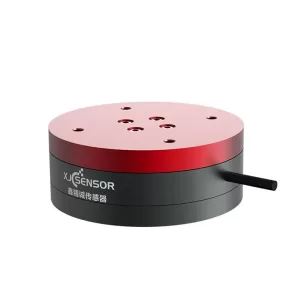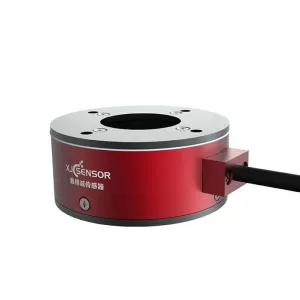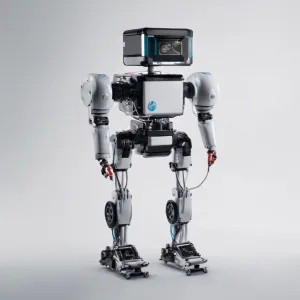Robot Sensor Manufacturer
Robotic sensor solutions
- Reacting quickly
- Technical support
- After-sales support

Robot Sensor - Wholesale and Customization Services | XJCXJCSENSOR
Welcome to XJCSENSOR, a leading Robot Sensor manufacturer and supplier of high-quality robot sensors in China. We specialize in providing wholesale and customization services for various robot applications. With our cutting-edge technology and expertise, we are committed to delivering reliable and precise sensor solutions tailored to meet your specific requirements.
About XJCXJCSENSOR
As a renowned sensor manufacturer, XJCXJCSENSOR has established a strong reputation in the industry. We offer a wide range of advanced sensors designed specifically for robotic applications. Our commitment to quality, innovation, and customer satisfaction sets us apart as a trusted sensor provider.

Finger Application Sensor
Our Finger Application Sensors are highly versatile and ideal for precise control of robotic fingers. These sensors include:
- Single-Axis Miniature Pressure Sensor: This sensor provides accurate pressure sensing capabilities for individual finger control, enabling delicate and precise manipulation.
- Six-Axis Miniature Force Sensor (The smallest in the world at 9.5mm): Offering exceptional force sensing accuracy, this sensor enables real-time monitoring of forces exerted by robotic fingers.
Joint Application Sensor
For seamless joint movement and control, our Joint Application Sensors are specifically designed to provide precise measurements. These sensors ensure accurate positioning and smooth operation of robotic joints, enhancing overall performance and efficiency.
Wrist Application Sensor
Our Wrist Application Sensors enable precise control and feedback for robotic wrist movements. Specifically, we offer:
- Six-Axis Force Sensor: Designed for wrist applications, these sensors provide real-time force feedback, allowing robots to interact with their environment more effectively.
Ankle Application Sensor
Our Ankle Application Sensors are engineered to enhance stability, balance, and agility in robotic systems. These sensors offer:
- Six-Axis Force Sensor: Providing accurate force measurement, these sensors enable robots to adapt to different terrain and maintain stable foot positioning.

Wholesale and Customization Services
At XJCXJCSENSOR, we understand the diverse needs of our customers. We offer comprehensive wholesale and customization services to meet your specific requirements. Whether you need sensors in bulk or tailored designs for your robotic applications, our team of experts is ready to assist you.
Why Choose XJCXJCSENSOR?
- Quality Assurance: Our sensors undergo rigorous testing to ensure exceptional performance and durability.
- Customization Options: We provide flexible customization options, allowing you to design sensors that perfectly fit your application.
- Competitive Pricing: With our wholesale services, you can enjoy competitive pricing without compromising on quality.
- Reliable Support: Our knowledgeable support team is available to assist you throughout the ordering process and provide technical guidance.
Contact Us
For more information about our robot sensors, wholesale services, or customization options, please contact us at:

Frequently Asked Questions (FAQs) about Robot Sensor
A robot sensor is a device that detects and measures physical or environmental quantities, converting them into electrical signals. These signals are then used by robots to perceive their surroundings, make informed decisions, and interact with the environment effectively.
Robotics employs various types of sensors depending on the specific application requirements. Common types of sensors used in robotics include:
- Vision Sensors: Cameras and image sensors used for visual perception.
- Force/Torque Sensors: Measure forces and torques applied by or on the robot.
- Proximity Sensors: Detect the presence or absence of objects in proximity to the robot.
- Range Sensors: Determine the distance between the robot and an object.
- Motion Sensors: Capture the robot’s movement and acceleration.
- Temperature Sensors: Monitor temperature variations in the robot’s environment.
- Inertial Sensors: Measure orientation, position, and acceleration of the robot.
- Light Sensors: Detect and measure ambient light levels.
Light sensors used in robots include:
- Photodetectors: Convert light energy into electrical signals.
- Photodiodes: Generate current when exposed to light.
- Phototransistors: Amplify current generated by light and provide a digital output.
- Ambient Light Sensors: Measure the intensity of ambient light in a robot’s environment.
- Color Sensors: Detect and differentiate colors using light spectrum analysis.
Several sensors can be used in robots for measuring different quantities, such as:
- Distance/Proximity Sensors: Ultrasonic sensors, infrared sensors, laser sensors, etc., are commonly used to measure distances.
- Force/Torque Sensors: Used to measure forces and torques in robotic applications.
- Encoder/Motion Sensors: Measure the position, speed, and orientation of robot joints or end-effectors.
- Vision Sensors: Cameras and imaging systems used for measuring distances, sizes, and shapes of objects.
There are several manufacturers that produce sensors specifically designed for robotics applications. XJCSENSOR is one such manufacturer known for providing high-quality sensors tailored for various robot applications.
Industrial robots utilize a wide range of sensors to enhance their capabilities and ensure safe and efficient operation. Some commonly used sensors in industrial robots include:
- Proximity Sensors: Used to detect object presence or proximity during pick-and-place operations.
- Force/Torque Sensors: Enable robots to handle delicate objects with precision and monitor assembly processes.
- Vision Systems: Utilized for object recognition, quality inspection, and robotic guidance.
- Encoder Sensors: Provide feedback on joint positions, enabling precise control of robot movements.
- Safety Sensors: Ensure robot-human collaboration by detecting and preventing collisions or unsafe conditions.
Industrial robots are extensively used in factories across various industries. Commonly deployed robots in factory settings include:
- SCARA Robots: These robots have multiple joints and are ideal for assembly, pick-and-place tasks, and material handling.
- Articulated Robots: Featuring multiple rotary joints, they provide flexibility for complex assembly, welding, or painting operations.
- Delta Robots: Known for their high-speed and precision, they excel at tasks requiring fast and accurate pick-and-place operations.
- Cartesian Robots: These linear motion robots are suited for applications such as packaging, CNC machining, and material transfer.
A robot can incorporate different types of sensors depending on its intended functionality. Some common sensors found in robots include vision sensors, force/torque sensors, proximity sensors, range sensors, inertial sensors, encoders, temperature sensors, and light sensors. These sensors provide robots with the ability to perceive and interact with their environment effectively.
The choice of sensors depends on the specific requirements and application of the robot. However, some commonly preferred and highly reliable sensors for robotics include:
- High-resolution cameras for vision systems.
- Precision force/torque sensors for accurate force feedback.
- Proximity sensors for object detection and collision avoidance.
- Encoder sensors for precise position control.
- Inertial measurement units (IMUs) for motion sensing and orientation estimation.
Ultrasonic Sensors: These sensors use sound waves to measure distances and detect objects within their range. They are commonly used for proximity sensing and obstacle detection in robotics.
Line Following Sensors: These sensors are designed to detect and follow lines or paths. They are often used in robotics kits that involve line-following or maze-solving tasks.
Please note that the specific sensors included in a robotics kit may vary depending on the manufacturer and the purpose of the kit. Other types of sensors that can be found in robotics kits include color sensors, touch sensors, light sensors, infrared sensors, and temperature sensors. These sensors provide additional functionality and expand the capabilities of the robotics kit, allowing users to explore different aspects of robotics and programming.
When choosing a robotics kit, it is essential to consider the sensors included and their compatibility with the desired projects or applications. Having a diverse range of sensors allows users to experiment and develop various robotic functionalities, promoting creativity and learning in the field of robotics.
If you have any specific questions regarding the sensors or robotics kits provided by XJCXJCSENSOR, please feel free to reach out to us. Our team will be more than happy to assist you with your inquiries and help you choose the right sensors for your robotics projects.
